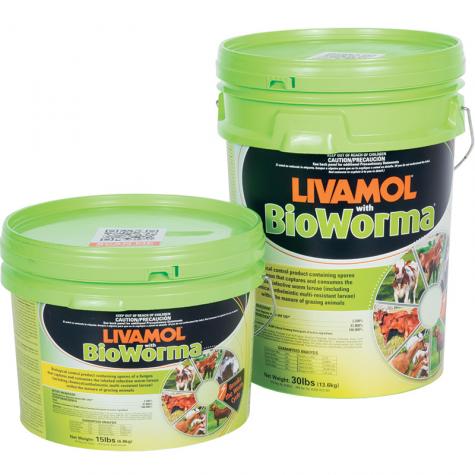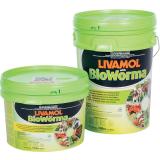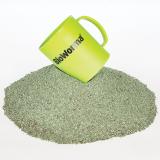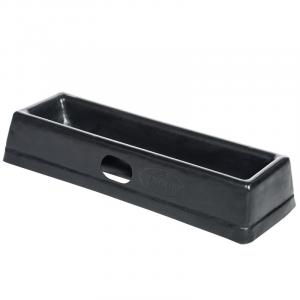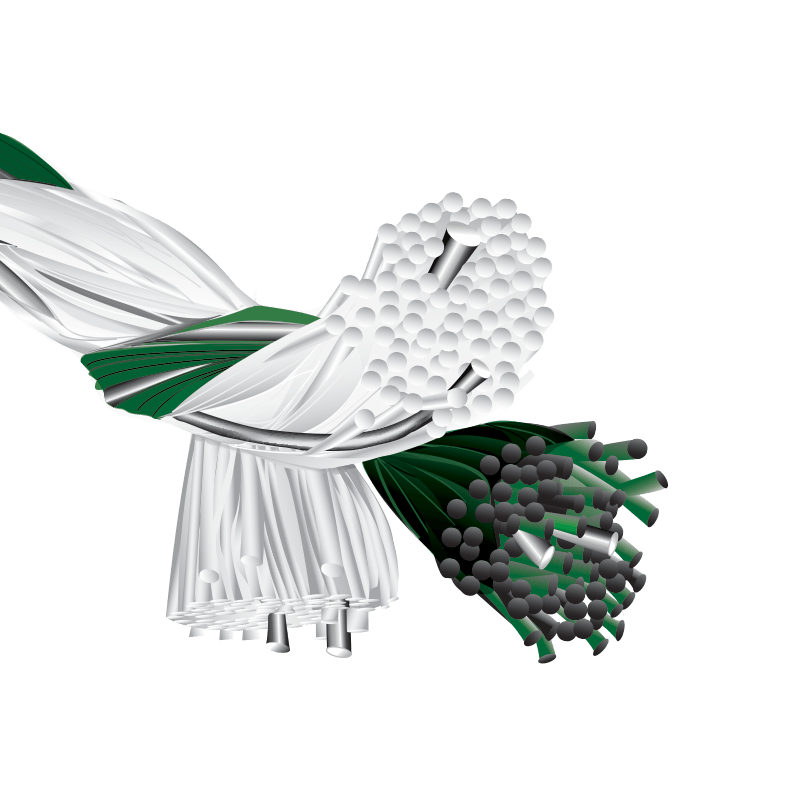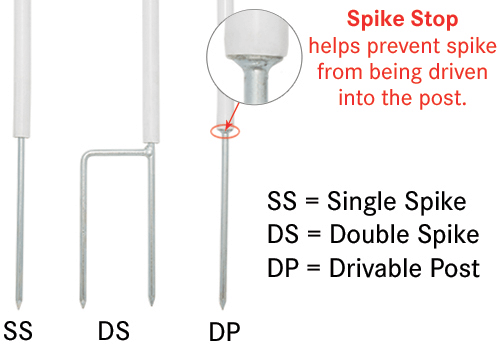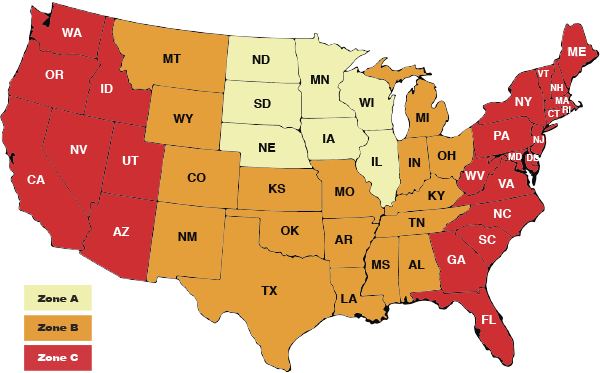Livamol® with BioWorma®
A feed supplement to control the spread of parasitic larvae in the pasture. Livamol® with BioWorma® contains a naturally occurring fungus that captures and consumes infective worm larvae (including chemical and anthelmintic resistant larvae) within the manure of grazing animals. BioWorma® is effective when fed to sheep, goats, cattle, horses and others—including deer, alpacas and zoo animals.
![]() California Residents: Proposition 65 Information
California Residents: Proposition 65 Information
Benefits
Duddingtonia flagrans reduces the number of gastrointestinal nematodes (GIN) larvae on pasture, which is significantly greater than a chemical wormer can do within the animal. Overall averages below:
68% – SHEEP | 86% – GOATS | 81% – CATTLE | 84% – HORSES
Note: BioWorma® consumes larvae from the pasture, reducing the possibility of reinfection. It does not eliminate parasites present in the animal. Animals need to be treated with a dewormer/anthelmintic to remove the internal parasites.
Common Questions
- If I feed BioWorma® for 3 months will it establish on my farm?
- No. Once the fungus has consumed the larvae in the manure it will die.
- Is BioWorma® affected by seasonal change?
- BioWorma® is recommended for strategic use during periods when weather conditions are conducive to larval development and transmission onto pasture at temperatures above 40°F (5°C).
- Does it affect dung beetles or earthworms?
- There are no negative effects on non-target soil nematodes, earthworms, microarthropods, soil bacteria and fungi. Beneficial insects feeding or breeding on manure (e.g. dung beetles, fly larvae) are not negatively affected.
- Can I feed it to pregnant ewes?
- There are no precautions for feeding to pregnant animals.
- What's the difference between BioWorma® and Livamol® with BioWorma®?
- BioWorma® is a concentrated feed additive that is mixed into the feed (or other supplements). Livamol® with BioWorma® is a feed supplement premixed with BioWorma® and top dressed over the animals' feed.
Specs
Active Ingredient
- Duddingtonia flagrans strain IAH 1297* 2.200%
Guaranteed Analysis
- Crude Protein, min 20%
- Crude Fat, min 5%
- Crude Fiber, max 16%
- Calcium, min 4%
- Calcium, max 6%
- Phosphorus, min 1.5%
- Fluorine, max 0.025%
- Vitamin A, min 27,000 IU/lb
- Vitamin D3, min 54,000 IU/lb
- Manganese, min 104 ppm
(*) Contains a minimum of 30,000 Colony Forming Units/gram of active ingredient.
Ingredients: Plant Protein Products, Processed Grain By-Products, Dicalcium Phosphate, Calcium Carbonate, Sugar, Cane Molasses, Fish Oil, Propylene Glycol, Benzoic Acid (preservative), Manganous Oxide, FD&C Blue No. 1, Butylated Hydroxytoluene (preservative), Vitamin D3 Supplement, Vitamin A Supplement, Copper Sulfate, Zinc Oxide, Citric Acid (preservative), Salt, Sodium Phosphate, Vitamin B12 Supplement, Riboflavin, Pyridoxine Hydrochloride, Thiamine Mononitrate, Cobalt Sulfate, and Sodium Iodide.
Biological control with Duddingtonia flagrans is applicable to the larvae of:
- Sheep and Goats
- Barber’s Pole Worm or Wire Worm (Haemonchus spp.), Black Scour Worm or Hair Worm (Trichostrongylus spp.), Brown Stomach Worm (Teladosagia (Ostertagia) spp.), Nodule Worm (Oesophagostomum spp.), Thin-necked Intestinal Worm (Nematodirus spp.) and Hookworm (Bunostomum spp).
- Cattle
- Barber’s Pole Worm or Wire Worm (Haemonchus spp.), Brown Stomach Worm (Ostertagia spp.), Black Scour Worm or Hair Worm (Trichostrongylus spp.), Hookworm (Bunostomum spp.), Intestinal Worm (Cooperia spp.), Thin-necked Intestinal Worm (Nematodirus spp.), Nodule Worm (Oesophagostomum spp.).
- Horses
- Large strongyles (large red worms), including Strongylus spp., Triodontophorus spp. and Oesophagodontus spp.,small strongyles (small red worms or cyathostomes), including Cyathostomum spp., Cylicocyclus spp. and Cylicostephanus spp., Stomach Hair Worm (Trichostrongylus axei), Ascarids (Parascaris equorum), Threadworms (Strongyloides westeri) and Pinworms (Oxyuris equi).
How to Use
Daily Dosage Rates for Grazing Animals
| Bodyweight | Dose | Cost Per Animal Per Day* |
|---|---|---|
| 50 lbs | 0.8 oz | $0.23–$0.29 |
| 100 lbs | 1.6 oz | $0.46–$0.58 |
| 200 lbs | 3.2 oz | $0.93–$1.16 |
| 400 lbs | 6.4 oz | $1.85–$2.32 |
| 500 lbs | 8.0 oz | $2.32–$2.90 |
| 750 lbs | 12.0 oz | $2.78–$3.48 |
| 1,000 lbs | 16.0 oz | $3.70–$4.63 |
| 1,200 lbs | 19.2 oz | $4.63–$5.79 |
(*) Costs are provided as an estimate only. Qty. purchased and freight charges may affect final pricing.
USE RESTRICTIONS: Not for use in medicated feed. Not for use in free-choice feed. Do not feed undiluted. Not for direct consumption. Intended for further mixing into feed.
Shepherd’s Choice™ Management Tip
Livamol® with BioWorma® has a small particle size and is somewhat sandy in texture. To increase palatability and adhesion when feeding with grain, first process grains so they too have a smaller particle size. Or add moisture so the grain and supplement stick together. To start, add moisture at 1% of the daily feeding. For reference, a gallon of water weighs 8 lbs. A quart of water will treat 200 lbs of grain. If mixing daily, you can increase the moisture, possibly up to 5%. Another option would be to add diluted molasses to help it stick to the grain to encourage animals to consume the product.Tips
- For best results, treat animals with a suitable oral, injectable, or pour-on wormer/anthelmintic to rid the animals of worms, then begin administration of Livamol® with BioWorma®.
- Move the treated animals onto low worm pasture (that is, pasture that has not been grazed by the same animal species for a minimum of 6 weeks).
- The most worm-susceptible are young animals (from 3 months up to 18-24 months of age) and periparturient females (last month of pregnancy and while producing milk) as they are the most likely to have less resistance to worm infestation due to low immunity. Do not underestimate pasture contamination by adult stock, even animals with low fecal egg counts (FECs), considering the volume of fecal material adult stock place on pasture.
- Thoroughly mix the Livamol® with BioWorma® with feed, and commence daily administration of the resultant mixture to minimize pasture infectivity and maintain the low worm status of the animals.
- Livamol® with BioWorma® will begin to work within the first day and may be fed continuously when warm, moist climatic conditions are conducive to parasitic nematode activity.
- Livamol® with BioWorma® is for use during periods when conditions are conducive to larval development and transmission onto pasture at temperatures above 40°F (5°C).
- Use Livamol® with BioWorma® in conjunction with the specified worm management strategy for your area by contacting your veterinarian or animal health advisor. It is important to consider the principles of refugia.
- Periodically check the worm burden and monitor the effectiveness of the worm management system. Options include fecal egg counts (FECs), the fecal egg count reduction test (FECRT) and/or identifying worm species by using fecal larval cultures (FLCs). Re-treatment with an effective chemical wormer may be indicated (consult your Veterinarian).
Questions? Ask a sheep expert for advice.
Shipping
Item #780237 and #780238 are eligible for FREE Ground Delivery within the contiguous USA when ordering $100 or more of qualifying items.
Truckload pricing (10 pails or more) is available by request. Please contact us online or call 800-282-6631 for a quotation.
Estimated Cost for LTL Shipments
| # of Pails | Weight | Shipping Cost | ||
|---|---|---|---|---|
| Zone A | Zone B | Zone C | ||
| 15 lb Pails | ||||
| 10 | 150 lbs | $100 | $130 | $170 |
| 20 | 300 lbs | $196 | $260 | $340 |
| 30 lb Pails | ||||
| 10 | 300 lbs | $152 | $175 | $230 |
| 20 | 600 lbs | $304 | $350 | $460 |
Precautions
Can cause serious eye irritation. Wear protective gloves, protective clothing, eye protection and face protection.
-
Buckets and Troughs
Aluminum TurboScoop, large
Item #938361 -Versatile utility scoop with a front-facing handle. Easy to use and kind to wrists. Strong and rust-proof, ensuring it remains a reliable tool for years.
$24.00 -
Buckets and Troughs
Aluminum TurboScoop, small
Item #938360 -Versatile utility scoop with a front-facing handle. Easy to use and kind to wrists. Strong and rust-proof, ensuring it remains a reliable tool for years.
$16.00 -
PortaTroughs
PortaTrough™ 5
Item #938000 -Portable 5 ft feeder withstands all weather and animal conditions. Stackable for easy movement and storage.
$86.00 -
PortaTroughs
PortaTrough™ 3
Item #938010 -Easy to clean 3 ft livestock feeders used to provide grain, minerals, salt or water. Stackable for easy movement and storage.
$49.00 -
Buckets and Troughs
GoatTuff Feeder
Item #938020 -Durable trough feeder designed specifically with goat behavior in mind. Reduces waste and promotes animal safety.
$39.00 -
Buckets and Troughs
Rubber Pan (without handles), 3 gallon
Item #999610 -Rubber feeding and watering pan for livestock. Flexible and sturdy through decades of use. 3 and 6.5 gallons.
$12.00
Write a Review
You must be logged in to leave a review. Please sign in.
Michael R from Georgia
The price is really my only issue...it is REALLY expensive to administer. That said, we had struggled with barber pole worm in our modest sized herd of Spanish Goats. Our FAMACHA scores were dangerously low, even using combinations of Prohibit, Safeguard and Cydectin to worm. They were constantly getting reinfected. We decided to give this product a try (in spite of the cost), and could not be more happy with the results. Within a month, every single animal was a 1 or 2 on the FAMACHA scale. Like others have said, they won't like it on day one...but just keep scattering it over their grain and within two days, they'll start lapping it up. They literally lick their feeders clean to get up every last bit. So 5 stars for the quality of the product...and 2 stars for the price. I hope that either competition or economies of scale bring the cost down because a $150 bucket lasts only 4 weeks with our herd of 29 goats...12 of whom are only 9 months old.
Lisa K from Florida
I'm starting with 3 stars and hoping to edit and improve my rating. I just started giving small amounts to my cattle, mixed in feed, since other reviewers said their animals found it unpalatable (and so far so good, I don't think that will be a problem for me). My cattle are grass-fed and -finished, and I only use range cubes as a training aid to help move them around easily; otherwise I don't feed them. I've been pondering how to give them such a large amount of BioWorma without having to put it in huge amounts of feed, for which I do not have adequate feeders, so I'd either have to spend a lot of money on feeders or lose the powdered BioWorma on the ground. I was also perplexed that the instructions say to mix it in feed, but only on a 'per hundredweight' scale, not in a ratio of BioWorma to feed. If it's important to mix with feed, aren't the proportions also important? I looked again at the information on this site for clues and found something important:
Click on the Data Sheet tab.
Scroll down to the chart called Daily Feeding Rates. It says:
"LIVAMOL® with BioWorma® may be mixed with feed, offered by free access alongside other feed,..." So it doesn't really have to be mixed in feed, apparently, but just offered with other feed available. Is hay considered 'feed?'
But! While the note on the chart says that, the product label says this:
"Not for use in free-choice feed. Do not feed undiluted. Not for direct consumption. Intended for further mixing into feed."
So which is it? And why? Will it hurt my animals if I follow the directions on the chart? If it's important to mix it in feed, it should be important to specify a mixing rate, but there is none. If it can't be fed free-choice, then I'm supposed to somehow monitor and control how much each one eats? Yet dosing is based on "the heaviest animal in the group to determine the appropriate amount of Livamol® with BioWorma® to use." I take that to mean that I should dose as if every animal weighed as much as the heaviest animal, which makes it sound relatively harmless and so probably safe to feed free-choice.
I love the concept, I'm so grateful to the company for something that's not an antibiotic, and I want to use the product, but did it ever go through beta-testing to work out these sorts of contradictions in labeling?
And my other puzzle with the product is that, when fed to a herd, and they are competing for the feed (mine do, it's a rare treat for my herd), who gets the most? The ones who always eat the most of anything, including the hay, because they're at the top of the pecking order. Who is most likely to need it the most? Those at the bottom of the pecking order, who can't compete.
The manufacturer is working to get Livamol with BioWorma approved for use as a top dress with free choice mineral. However, as of January 2020, that approval and use instructions have not been completed.
This product does not treat the animal itself. Rather, livestock that consume this product are strategically placing the Livamol with BioWorma product throughout the pasture so that the fungi can consume the parasite larvae. For best results, treat animals with a suitable oral, injectable, or pour-on wormer/anthelmintic to rid the animals of worms, then begin administration of Livamol with BioWorma.
Livamol with Bioworma is another tool for your parasite toolbox and may not fit all situations. If you have a parasite resistance problem this could potentially be utilized to break the worm cycle.
April H from TN/USA
Love this product. Made a HUGE difference in parasite loads this summer! Coats looked and felt much better. We did not have issues with palatability. Only day 1, but after that they LOVE it!!!
Robin K from Texas
I raise dairy goats and do feed grain once daily to all animals. I do not have enough land for proper pasture rotation. On year 10 here, with large pasture parasite loads. The last three years, I just assume when I check eyelids that they will be pale. A rigorous deworming routine has kept every animal alive, but increased wormer resistance until only Prohibit would work. I was getting desperate.
This product was a miracle on MY property. I started feeding it this spring, right before the hot/wet weather hit. I have seen consistently pink eyelids, and I have only wormed TWICE. Once after kidding and once at the end of the summer.
I quit using it in the summer during the extreme dry heat, and am now ordering again in preparation for fall.
It is true that this is not palatable. Introduce it slowly on some sort of sweet feed that it will stick to. Mine got used to it. Even does on the milk stand that didn’t have to fight for feed.
So thankful to have this option!!
With 20 does and 5 bucks, I order one 30 lb pail per month and get the free shipping. Saved me money in the long run.
Kerri J from New York
Well it’s a bit early to really tell if this product will work. I will say that only one goat would eat it the first day I did add molasses and got my three kids and one buck to eat it. My old buck still has refused and because its so expensive he’s not getting it. I have a small 1 acre farm with a small herd of goats. It’s been really wet here this year and since I can’t rotate grazing and had a bad worm issue, I’m trying this product.


